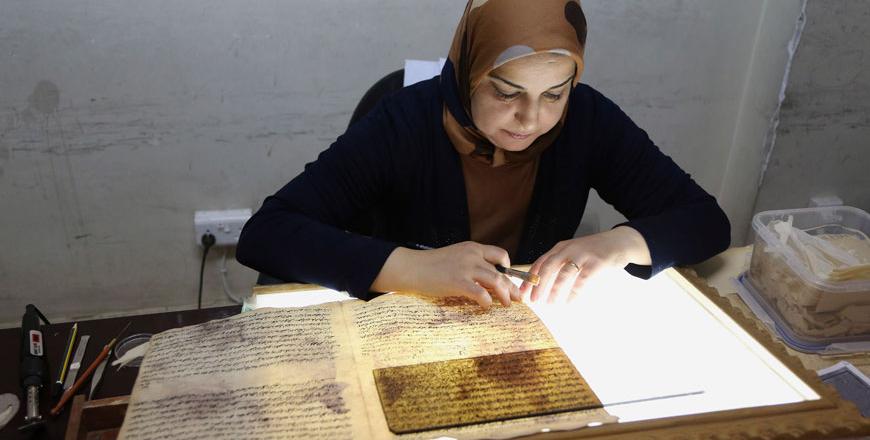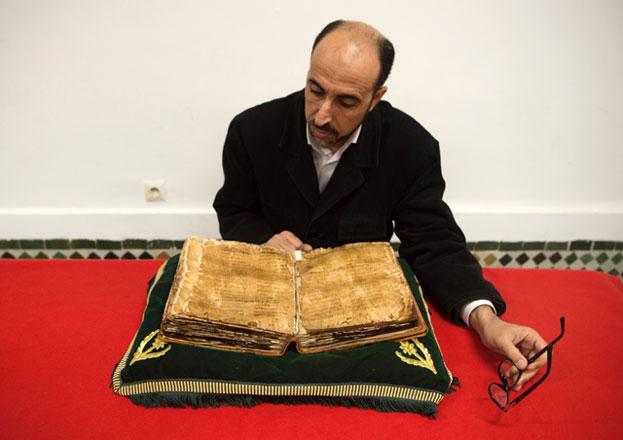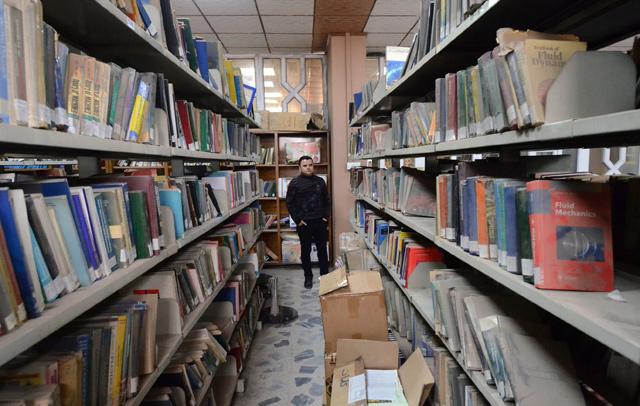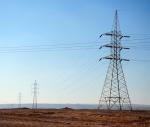You are here
Old manuscripts get facelift at Al Aqsa Mosque
By AP - Feb 01,2014 - Last updated at Feb 01,2014

OCCUPIED JERUSALEM — In the 1920s, an urgent call went out to the literati across the Middle East from Arab leaders in Jerusalem: Send us your books so that we may protect them for generations to come.
Jerusalem was soon flushed with writings of all kinds, to be stored and preserved at the newly minted Al Aqsa Mosque library.
But many of those centuries-old manuscripts are in a state of decay. Now, religious authorities are restoring and digitising the books, many of them written by hand. They hope to make them available online to scholars and researchers across the Arab world who are unable to travel to Jerusalem.
Hamed Abu Teir, the library’s manager, called the manuscripts a “treasure and trust”. ‘’We should preserve them”, he said.
Al Aqsa Mosque, Islam’s third holiest site, is located on a hilltop compound known to Muslims as the Noble Sanctuary and to Jews as the Temple Mount. The holy site is ground zero in the territorial and religious conflict between Israel and its Arab neighbours.
The library and its 130,000 books are housed in two separate rooms in the compound, where modern steel bookshelves are affixed to ancient stonewalls.Among the collection are some 4,000 manuscripts, mainly donations from the private collections of Jerusalem families. UNESCO, which is providing assistance for the restoration project, says the library contains “one of the world’s most important collections of Islamic manuscripts”.
The drive to restore the manuscripts and get them online is part of a greater global trend that has seen an array of historical documents digitised and uploaded to increase access to researchers worldwide.
Here, the gap to be bridged isn’t just physical distance. Residents of countries with no diplomatic relations with Israel, including much of the Arab world, are unable to visit Jerusalem and Palestinians living in the nearby West Bank or the Gaza Strip need to secure a permit from Israel to enter the city. Officials hope to circumvent those hindrances by putting the manuscripts online.
“A student in the Arab and Muslim world can’t access it. A student in Algeria or Saudi Arabia for example can’t come here and access [the manuscripts]. We want to grant him the knowledge in his own house,” said Abu Teir.
Most of the manuscripts were donated in response to a call in the early 1920s from the Supreme Muslim Council, a religious governing body, said Walid Ahmad, an education professor at Israel’s Al Qasemi Academic College who has researched the library. He said the council sought to prevent Arabs from selling old manuscripts to foreign and Jewish buyers and preserve the Islamic heritage in one of its holiest sites.
The oldest book dates back 900 years, with some of the newer titles from the 19th century. Most of the texts are religious, but other subjects include geography, astronomy and medicine. Some of the pages contain personal letters about travel in the Middle East of the 18th century. Radwan Amro, who is leading the restoration process, said the most well-known manuscript in the collection was written by Imam Mohammed Al Ghazali, an Islamic scholar from the 12th century.
The manuscripts were stored in a library for the first few years of the 1920s, but when riots erupted in 1929 over disputes surrounding Jewish and Arab access to the sacred compound, the manuscripts were stored in bags and closets in a separate building nearby, Ahmad said. They would remain there for nearly half a century, when a new space was created for them.
But upon unpacking the books, officials realised they had been pillaged, with many snatched or destroyed.
About a quarter of the 4,000 manuscripts are considered in poor condition. Half of the books are already undergoing restoration, but the other half lie exposed in a small room in the library.
Many are in tatters. Shards of paper crumble off their pages. Insects have dug deep trenches into the unprotected leafs. Thousands of loose, fraying pages lie on a long table where an expert is attempting to match them to their original book.
The restoration and digitisation project, funded by the Waqf, Jordan’s Islamic authority which manages the holy site, aims to preserve what remains.
In the six years since the project began, Amro said the 10-person team has restored 200 manuscripts as well as old maps, Ottoman population and trade registers and hand-written documents from the Mamluk period of the 13th to 16th centuries. But the painstakingly slow process of treating every individual page to protect the intricate text and the paper’s delicate fibres means restorers have a long road ahead of them.
Amro would not give an estimate as to when the restoration would be complete, joking that it could take “hundreds of years”. But he said nearly all of the manuscript pages have been digitised and hopes that by the end of the year they will be put online.
Ahmad of Al Qasemi College said that in order to stay relevant in the Arab world from which it is physically disconnected, the library must put its collection online.
“Presenting materials to the greater public is the essence of an important library like Al Aqsa’s,” said Ahmad. “That’s how you stay on the map as a library.”
Related Articles
BAGHDAD — The dimly lit, dust-caked stacks of the Baghdad National Library hide a treasure of the ages: crinkled, yellowing papers holding t
FEZ, Morocco — Nestled in a labyrinth of streets in the heart of Morocco’s ancient city of Fez, stands the world’s oldest working library.It
MOSUL, Iraq — Watheq Mahmud is pursuing an advanced engineering degree but the textbooks he needs are often missing in his native Mosul, the


















